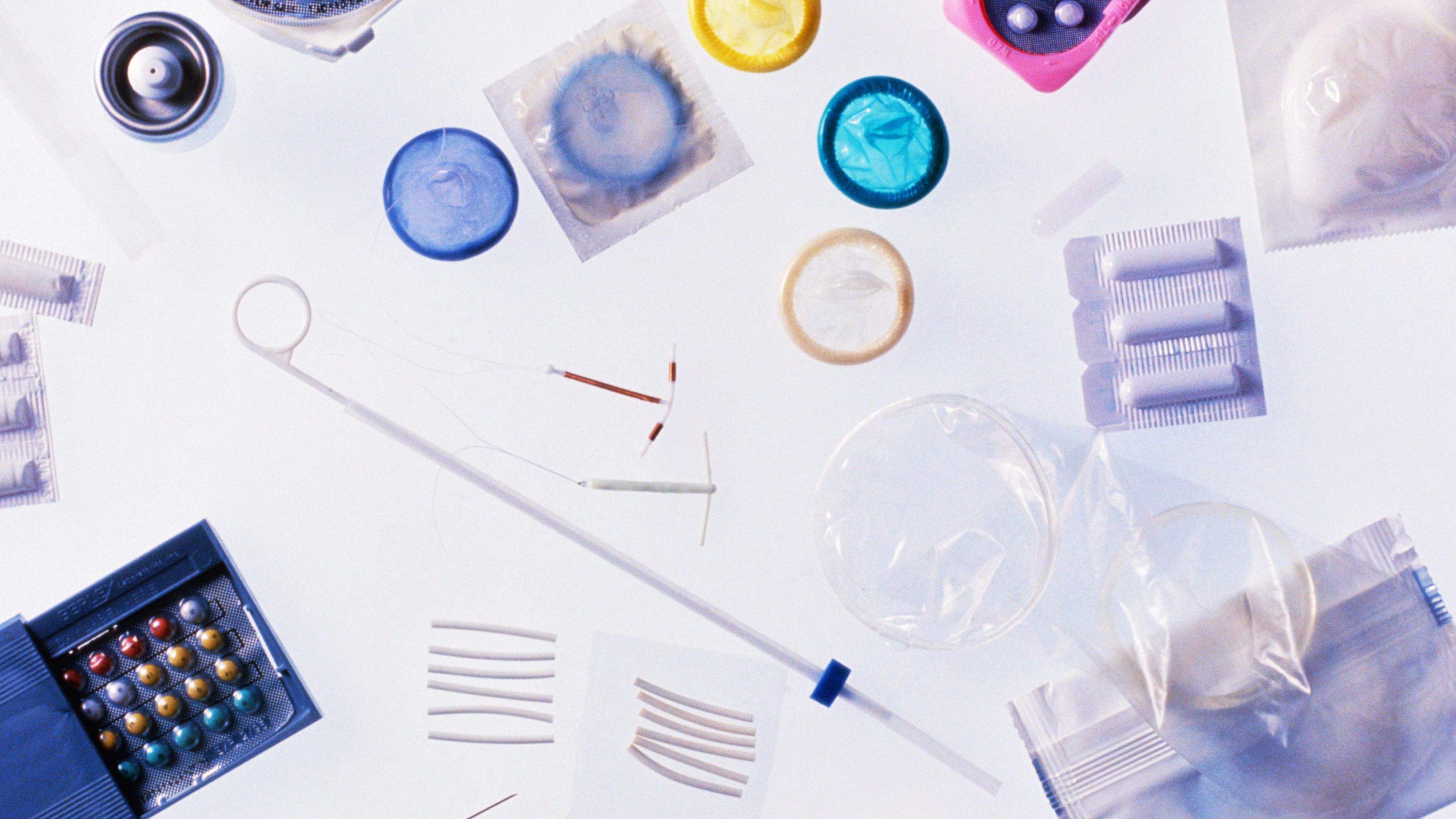11 Things You Don't Know About IUDs—But Should
For starters, they're more effective than the Pill.


Think of an intrauterine device—more commonly referred to as an IUD—like that new Indian restaurant you heard about, wanted to try, but became skeptical after a few Yelp reviews. We're here to set things straight.
The gist? It's a plastic, T-shaped birth control method that's slowly gaining popularity—more women are using it now than in 2006. And here's what you should know:
The hormonal IUD releases a synthetic form of progestin—a hormone that affects your menstrual cycle, pregnancy, egg fertilization, and ovulation. You can either spring for Mirena or Skyla, which can last for up to five years. The other IUD contains copper and doesn't have hormones. If you go this route, your doctor may recommend ParaGard, which lasts up to 10 years. Some side effects for either option include menstrual pain and bleeding for the first few months.
Between six and 12 women out of 100 women experience an unintended pregnancy while on the Pill. Less than 1 out 100 women with IUDs accidentally get pregnant every year. You do the math.
Some women don't even notice it goes in—others may feel slight cramping a day after the procedure. Your doctor will recommend some over-the-counter medications to relieve your ailments, but they should subside after a day or so, says Lauren Streicher, M.D., author of Sex Rx-Hormones, Health, and Your Best Sex Ever.
Before you go exit out of your screen, STOP. This happens to less than 5 percent of women, so chillax.
Always, always, always wrap it before you tap it.
Stay In The Know
Get exclusive access to fashion and beauty trends, hot-off-the-press celebrity news, and more.
If you find that an IUD is not your thing, just ring up your gyno and set up an appointment to have it removed. Note: The ability to get pregnant returns faster after an IUD is removed as opposed to going off the Pill, says Streicher.
The IUD has to go way deeper that a tampon does. Do not try at home.
FYI: So uncommon, but it is possible for the shape and size of a woman's uterus to prevent proper IUD insertion.
And it has such a pretty name! Dubbed Liletta, the hormone IUD releases levonorgestrel, which thins the womb's lining and lasts up to three years. Yay options!
Is Rite Aid out of Plan B? You can substitute it for the copper T stick if it's inserted within five days of unprotected sex. Again, you need a doctor to perform the insertion.
The copper one's effects fire up right away; the hormonal ones are effective right away if they're inserted within seven days after the beginning of your period. Celebrate (sex-lebrate?) good times!
You should also check out:
Male Birth Control Pills Could Become a Reality
What Has Birth Control Done For You Lately?
California Is Giving You FREE Birth Control Because It's the Law
When I'm not stalking future-but-never-going-to-happen husbands on Facebook, you can catch me eating at one of NYC's B-rated or below dining establishments—A-rated restaurants are for basics. Fun fact: Bloody Marys got me into eating celery on the regular. And for your safety, please do not disturb before 10 a.m. or coffee, whichever comes first.
-
 The 'You' Season 5 Cast Features People From Joe's Past, a New Love Interest, Madcap Twins, and More
The 'You' Season 5 Cast Features People From Joe's Past, a New Love Interest, Madcap Twins, and MoreHere's what to know about the star-studded final installment of the Netflix hit.
By Quinci LeGardye
-
 These J.Crew Sale Finds Basically Packed My Suitcase for Me
These J.Crew Sale Finds Basically Packed My Suitcase for MeI'm ready for my next vacation.
By Brooke Knappenberger
-
 Summer's Sportiest Shoe Trend Is Worth Shopping More Than Once
Summer's Sportiest Shoe Trend Is Worth Shopping More Than Once17 pairs from Nordstrom, Mango, and Zara I'm shopping now.
By Julia Marzovilla
-
 Senator Klobuchar: "Early Detection Saves Lives. It Saved Mine"
Senator Klobuchar: "Early Detection Saves Lives. It Saved Mine"Senator and breast cancer survivor Amy Klobuchar is encouraging women not to put off preventative care any longer.
By Senator Amy Klobuchar
-
 I'm an Egg Donor. Why Was It So Difficult for Me to Tell People That?
I'm an Egg Donor. Why Was It So Difficult for Me to Tell People That?Much like abortion, surrogacy, and IVF, becoming an egg donor was a reproductive choice that felt unfit for society’s standards of womanhood.
By Lauryn Chamberlain
-
 The 20 Best Probiotics to Keep Your Gut in Check
The 20 Best Probiotics to Keep Your Gut in CheckGut health = wealth.
By Julia Marzovilla
-
 Simone Biles Is Out of the Team Final at the Tokyo Olympics
Simone Biles Is Out of the Team Final at the Tokyo OlympicsShe withdrew from the event due to a medical issue, according to USA Gymnastics.
By Rachel Epstein
-
 The Truth About Thigh Gaps
The Truth About Thigh GapsWe're going to need you to stop right there.
By Kenny Thapoung
-
 The High Price of Living With Chronic Pain
The High Price of Living With Chronic PainThree women open up about how their conditions impact their bodies—and their wallets.
By Alice Oglethorpe
-
 I Used to Imagine Murdering the Men I Dated
I Used to Imagine Murdering the Men I DatedFalling in love helped me finally figure out why.
By Jessica Amento
-
 60 Workout Apps for Women Who Want Results (Without a Gym Membership)
60 Workout Apps for Women Who Want Results (Without a Gym Membership)Buying Guide Easy fitness plans you can follow without fear of judgment.
By Bianca Rodriguez